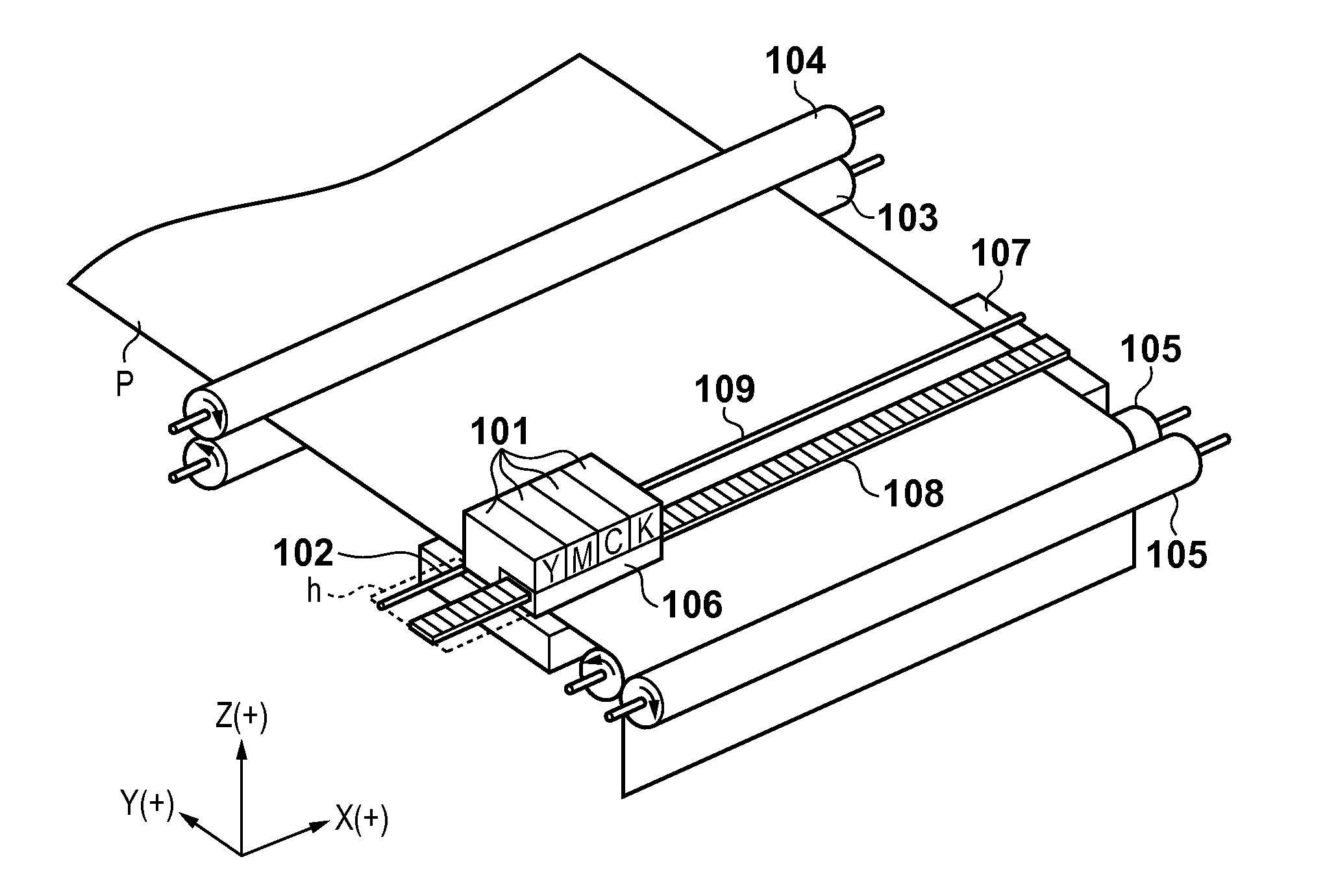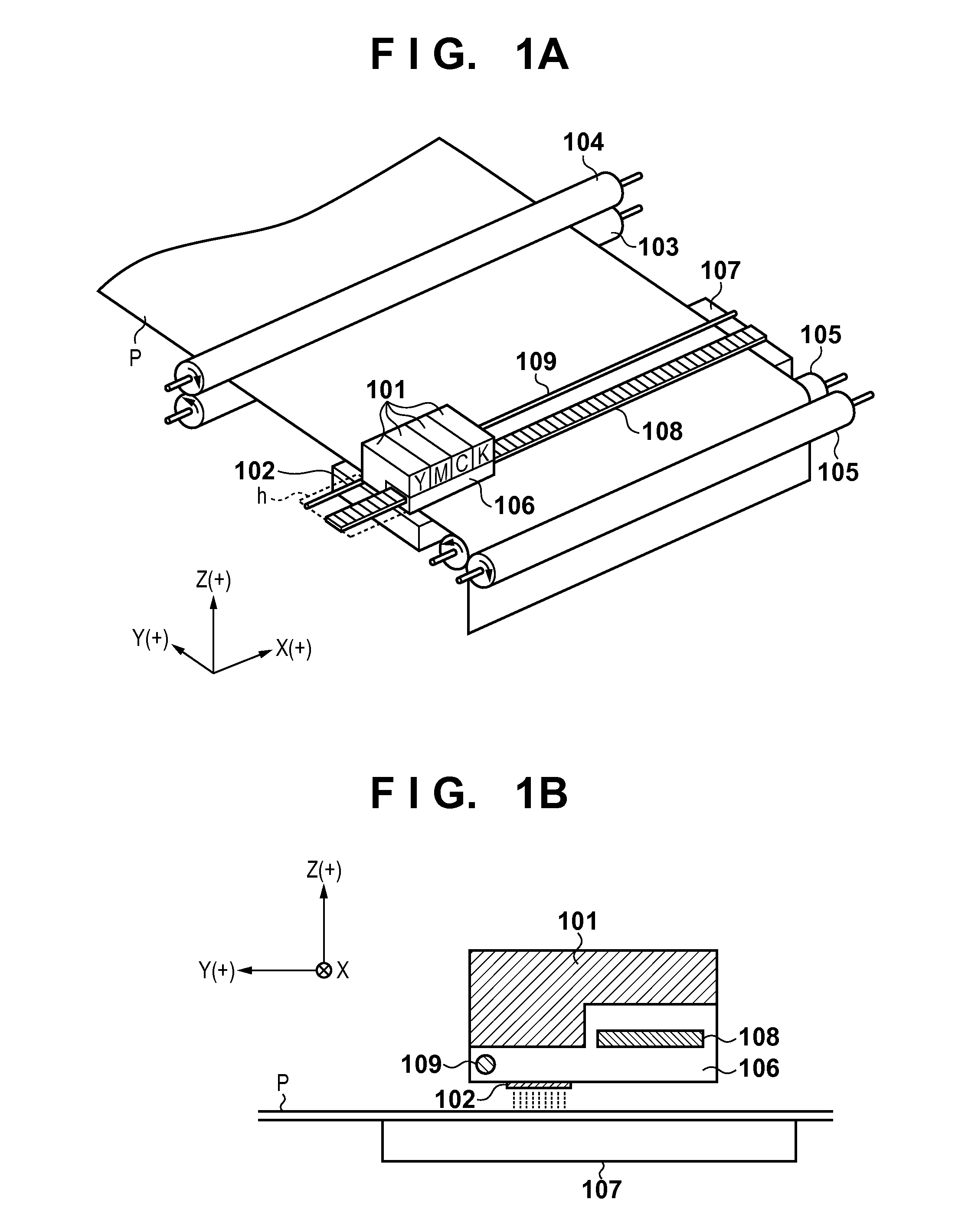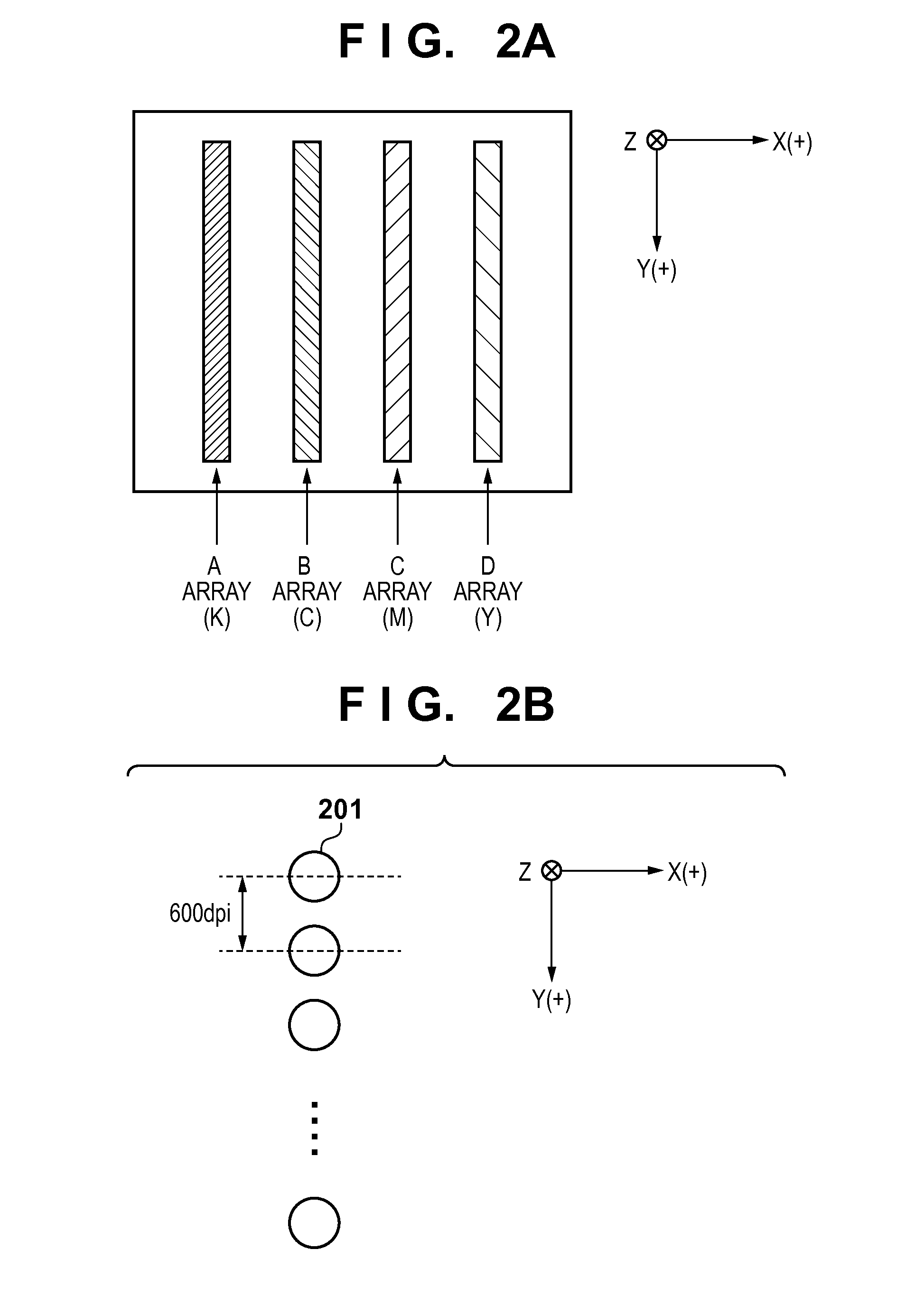Printing apparatus and printing control method thereof
a printing control method and printing apparatus technology, applied in printing, other printing apparatus, etc., can solve the problems of lowering the degree of freedom in allotment, density unevenness that appears, and ink-landing position shifts that have occurred, so as to suppress density unevenness and other problems
- Summary
- Abstract
- Description
- Claims
- Application Information
AI Technical Summary
Benefits of technology
Problems solved by technology
Method used
Image
Examples
first embodiment
[0060]FIG. 4 is a flowchart for explaining processing of multipass printing, which completes image printing of a single print area on a print medium by two print scans.
[0061]In step S401, R, G, and B original image signals, which are obtained by an image input device such as a digital camera or scanner or by computer processing, are input at a resolution of 600 dpi. In step S402, the R, G, and B original image signal input in step S401 are converted into R′, G′, and B′ signals by color conversion processing A. Furthermore, in step S403, the R′, G′, and B′ signals are converted into signal values corresponding to respective color inks by color conversion processing B. Since the printing apparatus of this embodiment adopts the 4-color ink configuration, the converted signals are image signals K1, C1, M1, and Y1 corresponding to ink colors K (black), C (cyan), M (magenta), and Y (yellow). Note that the practical color conversion processing B uses a three-dimensional lookup table (not s...
second embodiment
[0111]The first embodiment has explained the case in which two image data are completed by two scans. When printing is completed by a small number of scans, if shifts have occurred in the Y direction as the conveyance direction of a print medium, lateral stripes in the X direction become very prominent. This embodiment will explain a printing method which is also effective for shifts in the conveyance direction by increasing the number of scans.
[0112]Also, the first embodiment has explained the data generation method which is effective for ink-landing position shifts even in an image in which one dot is allotted at 600 dpi on an average. When print dots are overlaid each other using two image data which are binarized by error diffusion, the advantage described in the first embodiment can be provided, but an disadvantage is also observed, that is, image granularity is enhanced since dot overlapping occurs between print scans. Meanwhile, it is known that density unevenness caused by i...
PUM
 Login to View More
Login to View More Abstract
Description
Claims
Application Information
 Login to View More
Login to View More - R&D
- Intellectual Property
- Life Sciences
- Materials
- Tech Scout
- Unparalleled Data Quality
- Higher Quality Content
- 60% Fewer Hallucinations
Browse by: Latest US Patents, China's latest patents, Technical Efficacy Thesaurus, Application Domain, Technology Topic, Popular Technical Reports.
© 2025 PatSnap. All rights reserved.Legal|Privacy policy|Modern Slavery Act Transparency Statement|Sitemap|About US| Contact US: help@patsnap.com



